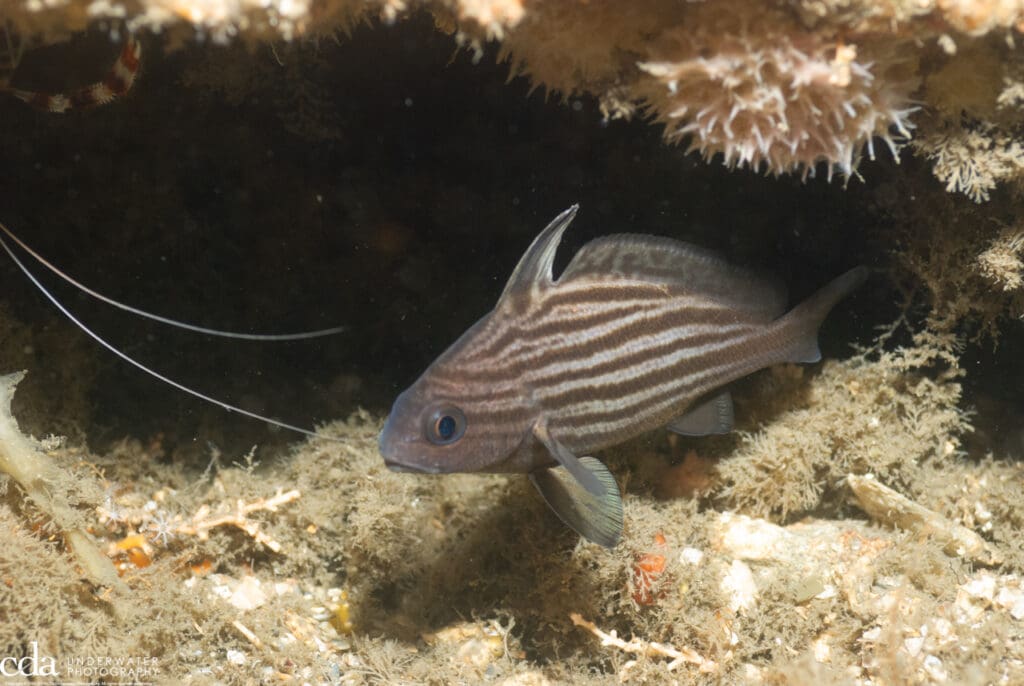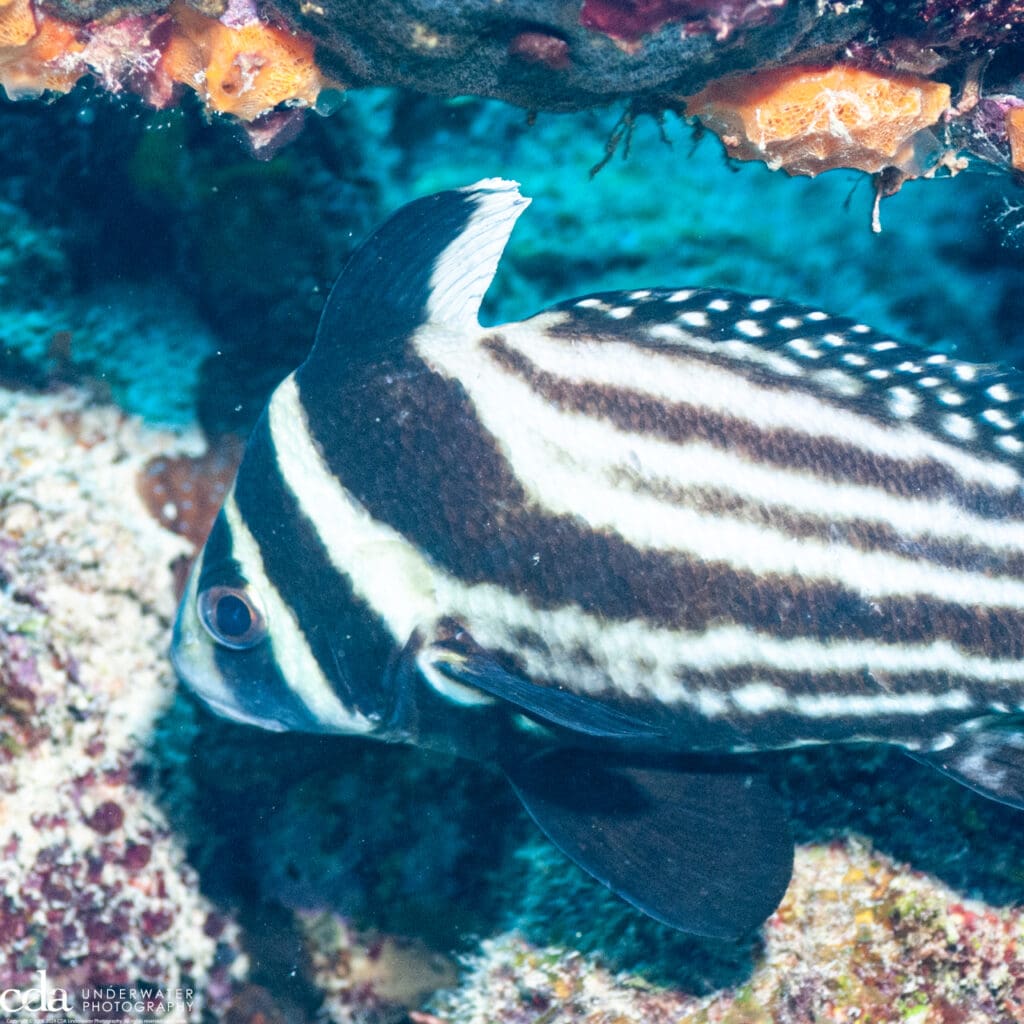It’s Friday, so it must be time for another #fff – Friday Fish Fact.
The spotted drum (Equetus punctatus) is a captivating species belonging to the family Sciaenidae, commonly referred to as drums or croakers. It has a striking appearance and intriguing behaviors, making it a favorite among divers. We frequently see juveniles in the coral heads when doing a shore dive off of Fort Lauderdale beach.
Appearance and Identification
The spotted drum fish is easily recognizable due to its distinctive black and white coloration and the spots on its tail and dorsal fin. Juveniles are particularly striking, with elongated dorsal fins and a rounded, banded appearance. As they mature, their body shape becomes more elongated, and the extended dorsal fin rays shorten. The adult spotted drum has an oblong-shaped body, deep at the head, tapering to a slender caudal peduncle. The body is adorned with vertical white and dark brown bars that curve to create longitudinal stripes along the body.
Eating and Feeding Habits
Spotted drum fish are nocturnal feeders, emerging from their daytime shelters under ledges or near cave openings to hunt at night. Their diet primarily consists of small crustaceans, polychaete worms, and occasionally small fish. They are known to frisk through the sand in search of food, creating a cloudy appearance in the water as they disturb the detritus. This feeding behavior is not only fascinating to watch but also plays a role in the ecosystem by helping to aerate the substrate.
Similarity to Related Species
Young spotted drum fish bear a remarkable resemblance to other related species, such as the jackknife fish (Equetus lanceolatus) and the highhat (Pareques acuminatus). Juvenile jackknife fish have a single black band that runs from the top of the first dorsal fin along the mid-body line to the tip of the caudal fin, but they lack the spots on the fins that are characteristic of the spotted drum. Highhat juveniles, on the other hand, have extremely long first dorsal fins but lack the continuous bars over the head seen in spotted drums. These similarities can make identification challenging for novice divers, but with careful observation, the unique patterns and behaviors of each species become apparent.

Habitat and Distribution
The spotted drum fish is found in the western Atlantic Ocean, including the Bahamas, the Gulf of Mexico, and the Caribbean Sea. In South Florida, divers can encounter these fish in coral reef environments, often under ledges or near cave entrances at depths ranging from 3 to 30 meters (approximately 10 to 100 feet). Popular dive sites in South Florida where spotted drums are frequently seen include the reefs off the Florida Keys and the coastal waters around Palm Beach and Broward counties.
Interaction with Scuba Divers
Spotted drum fish are generally solitary and secretive, often found around the bases of corals during the day. They are known to be relatively approachable and do not exhibit aggressive behavior towards divers. However, they are sensitive to disturbances and may retreat to their hiding spots if approached too closely or too quickly. Divers who move slowly and respectfully can enjoy observing these beautiful fish as they go about their daily routines.
Conservation and Importance
While the spotted drum fish is not currently considered endangered, it is important to maintain healthy reef ecosystems to support their populations. Coral reefs provide essential habitat and food sources for these fish, and protecting these environments ensures the survival of not only the spotted drum but countless other marine species.
Some editorial content generated with AI. Photographs courtesy of Christopher Duncan, Copyright 2025 CDA Underwater Photography, all rights reserved worldwide.

